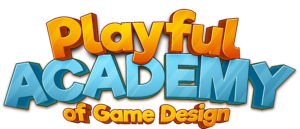

Categories
Games Have Resources
Learning Objectives
- Lesson objectives
- Define an escape game
- Describe what makes escape games fun
- Understand the definition of a puzzle
- Describe what makes a good puzzle
- Understand iterative development·
- Engineering design objective
- Define the criteria and constraints of a design problem
- Socioemotional learning objectives
- Planful
- Creative
Materials
- Example escape games
- Giant sticky note
- Materials for game boxes
- Large box
- Two 3-digit locks
- Invisible ink pen
- UV light
- Pieces of cardboard
- Glue
- Scissors
- Envelopes
- Camper Notebook
- Example analysis of Stop the Shapeshifter
- Brainstorming warm-up
- Planning sheet
Instructions
- Warm-up
- Allow campers to play with the example escape games and brainstorm their escape games on the analysis sheet
- Review
- Ask campers what they learned yesterday.
- Remind campers of the five elements of games. Note that today we will focus on resources.
- Escape games as collections of puzzles
- Talk to campers about what escape games are and why they are fun.
- Explain that escape games are a series of puzzles. A puzzle is an activity in which pieces need to be rearranged to reveal previously unknown information.
- The pieces of information are resources. Within a game you need to locate the resources and understand how they go together.
- Jigsaw puzzles are quintessential puzzles, but lots of activities can be puzzles.
- On a giant sticky note, list puzzles from games they’ve played recently.
- Discuss
- What makes a puzzle difficult or easy?
- When is a puzzle a game or part of a game?
- Iterative development
- Note that game design is an iterative process, which means that after developing the idea, you keep testing and making changes over and over.
- They will make multiple changes to their game throughout the week, so it doesn’t have to be perfect now.
- Assign today's leadership roles
- Ask campers what a leader did well yesterday
- Have each leader set a goal for today
- Escape game
- Show campers how to make each game. They will plan out what they want to do but will not build the game yet.
- Show them the combination sheet and explain the importance of recording their combinations
- Counting puzzle: demonstrate puzzle from Stop the Shapeshifter and explain they will make a similar puzzle for their first lock
- They will chose a number that does not use 1, 2, or 9
- They will draw a shape on their box that corresponds to that combination
- Show the UV ink pen and say they will use that for their second puzzle
- Show how to draw a jigsaw puzzle for the last puzzle that will go in an envelope
- Plan: Guide campers through the worksheet
- Give each camper two 3-digit locks of different colors
- Have them choose and write down two 3-digit combinations. The first cannot use 1, 2, or 9
- Have them decide where on the box they will draw their shapes
- Have them write down the combination they'll use for the UV light
- Have them decide what picture to draw for their jigsaw puzzle
- Build
- Allow campers to build their puzzles
Notes and Discussion
Discussion
- You may want to introduce campers to the example puzzle boxes now or let them discover them later. Throughout the day, pay attention to how games use different kinds of puzzles.
Notes
- The official definition of an escape room game is: Escape room games are a form of immersive entertainment where participants work within a themed room to find clues and solve puzzles to complete a mission within a time limit. Note that we refer to the business as an “escape room” and the individual games as “escape room games” or “escape games.”
